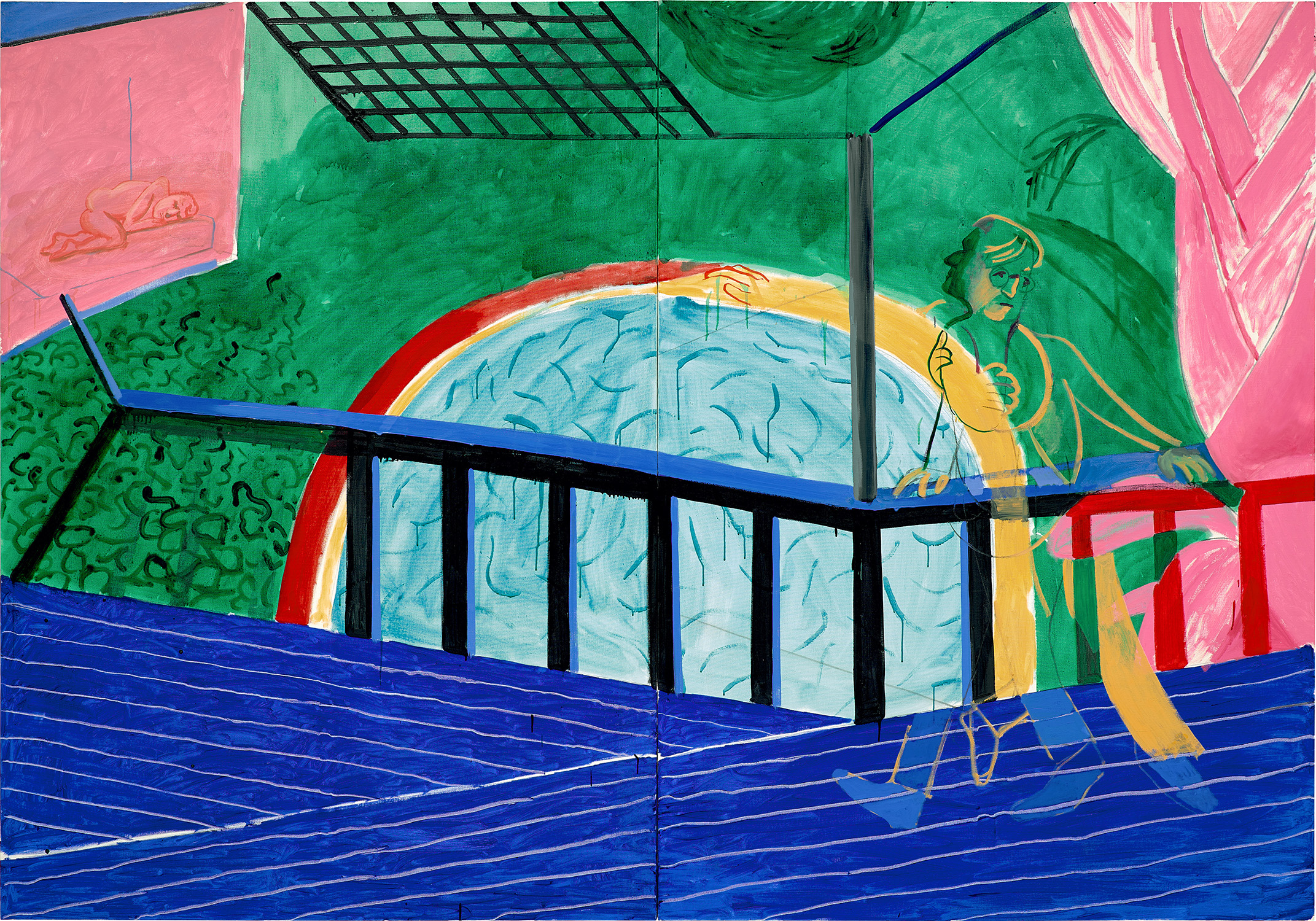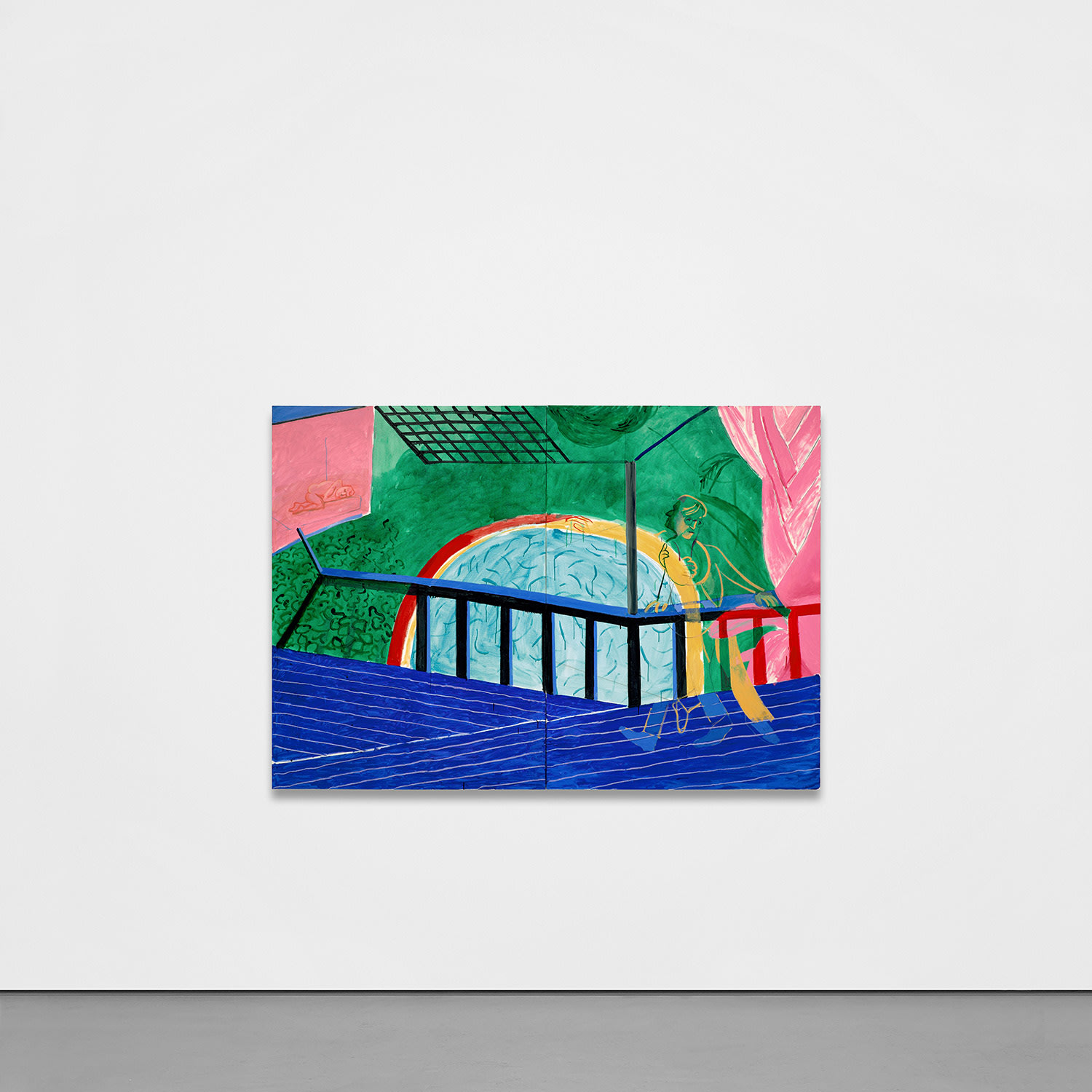



Property from The Collection of Morris and Rita Pynoos
19Ο◆
David Hockney
Self-Portrait on the Terrace
signed, titled and dated 'Self portrait on the terrace Jan Feb March 1984 David Hockney' on the reverse
oil on canvas, in 2 parts
each 213.4 x 152.4 cm (84 x 60 in.)
overall 213.4 x 304.8 cm (84 x 120 in.)
overall 213.4 x 304.8 cm (84 x 120 in.)
Painted in 1984.
Further Details
Full-Cataloguing
David Hockney
BritishDavid Hockney (b. 1937) is one of the most well-known and celebrated artists of the 20th and 21st centuries. He works across many mediums, including painting, collage, and more recently digitally, by creating print series on iPads. His works show semi-abstract representations of domestic life, human relationships, floral, fauna, and thechanging of seasons.
Hockney has exhibited at the Museum of Modern Art in New York, the Royal Academy of Arts in London, and the Van Gogh Museum in Amsterdam, among many other institutions. On the secondary market, his work has sold for more than $90 million.